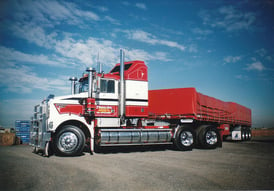 On January 10, 2024, the U.S. Environmental Protection Agency (EPA), U.S. Department of Justice, and the California Air Resources Board (ARB) filed a settlement agreement with Cummins, Inc. covering nearly one million Ram vehicles for which Cummins supplied diesel engines with illegal software-based “defeat devices” that produced misleading emission certification results compared with significantly higher emissions while the vehicles are in actual use. Cummins will pay the largest CAA penalties ever ($1,675 million in federal and state penalties), will fund environmental mitigation projects to compensate for excess nitrogen oxides (NOx) emissions ($175 million), and will also recall 630,000 vehicles (model years 2013-2019) to remove the defeat devices (estimated costs $150 million, including warranty extensions). Cummins will also implement corporate governance, organizational, and technical process reforms to minimize the likelihood of future violations.
On January 10, 2024, the U.S. Environmental Protection Agency (EPA), U.S. Department of Justice, and the California Air Resources Board (ARB) filed a settlement agreement with Cummins, Inc. covering nearly one million Ram vehicles for which Cummins supplied diesel engines with illegal software-based “defeat devices” that produced misleading emission certification results compared with significantly higher emissions while the vehicles are in actual use. Cummins will pay the largest CAA penalties ever ($1,675 million in federal and state penalties), will fund environmental mitigation projects to compensate for excess nitrogen oxides (NOx) emissions ($175 million), and will also recall 630,000 vehicles (model years 2013-2019) to remove the defeat devices (estimated costs $150 million, including warranty extensions). Cummins will also implement corporate governance, organizational, and technical process reforms to minimize the likelihood of future violations.
What are CAA vehicle testing requirements?
CAA directs EPA to develop a research, testing and regulatory program designed to reduce air emissions from motor vehicles. EPA divides motor vehicles into different classes (for example, cars are “light duty vehicles”), establishes emission limits for a variety of air pollutants (including NOx) for each model year (MY; I’ve written about them several times, including HERE), and prescribes specific tests that sample vehicles must pass in order to obtain a “certificate of conformity (COC)” that allows the manufacturer to sell that make and model in the U.S. COC application packages include technical information about the vehicle, including the engine and emission control devices, sensors and other electronics. Applications must also justify the benefits of each piece of auxiliary equipment, including “auxiliary emission control devices (AECDs),” and how any piece that may reduce the effectiveness of emission controls is not a “defeat device” that subverts effectiveness. EPA’s rules prohibit certification with a defeat device except in very narrow situations (e.g., necessary for safety, or incorporated into an emergency vehicle). As onboard electronics have become more sophisticated, reporting and testing requirements have become more detailed and elaborate.
What did Cummins do?
Cummins manufactured diesel vehicle engines to be incorporated into Ram trucks. As charged by EPA and ARB, Cummins violated CAA requirements for a decade:
- For MY 2013-19, Cummins sold some 630,000 engines with software functions and calibrations that caused those vehicles’ emission control systems to perform differently (and sometimes underperform) during normal vehicle operation and use compared with emissions testing.
- For MY 2020-2023, Cummins sold 330,000 engines with auxiliary emission control devices that the company did not disclose as part of the engine certification process. Prosecutors did not allege that these engines incorporated defeat devices.
In agreeing to the record-breaking consent decree, Cummins noted its cooperation with the investigations and did not admit wrongdoing.
What happens next?
The proposed settlement agreement is subject to a 30 day public comment period and then final approval by the US District Court for the District of Columbia. Cummins has agreed to pay the penalties within 30 days after court approval of the settlement. Mitigation projects funded by the federal payments will repower old locomotive engines; as of this writing ARB has not disclosed state mitigation projects. Recalls are already ongoing. Readers should note that this settlement does not include vehicle replacement, which was an important feature of earlier settlements with Volkswagen companies for their use of defeat devices (I wrote about the initial VW settlement HERE).
Self-Assessment Checklist
Does the organization own and operate any 2013-2023 Ram 2500 or 3500 vehicles?
If so, has the organization catalogued these vehicles in anticipation of Cummins’ recall campaign?
Has the organization catalogued the makes and models of other vehicles it owns and operates, to prepare for the possibility of expanded revelations?
Where can I go for more information?
EPA
- webpage, “2024 Cummins Inc. Vehicle Emission Control Violations Settlement”
- webpage, “Regulations for Emissions from Vehicles and Engines”
- California ARB, "Cummins Settlement Frequently Asked Questions
About the Author
 Jon Elliott is President of Touchstone Environmental and has been a major contributor to STP’s product range for over 30 years.
Jon Elliott is President of Touchstone Environmental and has been a major contributor to STP’s product range for over 30 years.
Mr. Elliott has a diverse educational background. In addition to his Juris Doctor (University of California, Boalt Hall School of Law, 1981), he holds a Master of Public Policy (Goldman School of Public Policy [GSPP], UC Berkeley, 1980), and a Bachelor of Science in Mechanical Engineering (Princeton University, 1977).
Mr. Elliott is active in professional and community organizations. In addition, he is a past chairman of the Board of Directors of the GSPP Alumni Association, and past member of the Executive Committee of the State Bar of California's Environmental Law Section (including past chair of its Legislative Committee).
You may contact Mr. Elliott directly at: tei@ix.netcom.com
